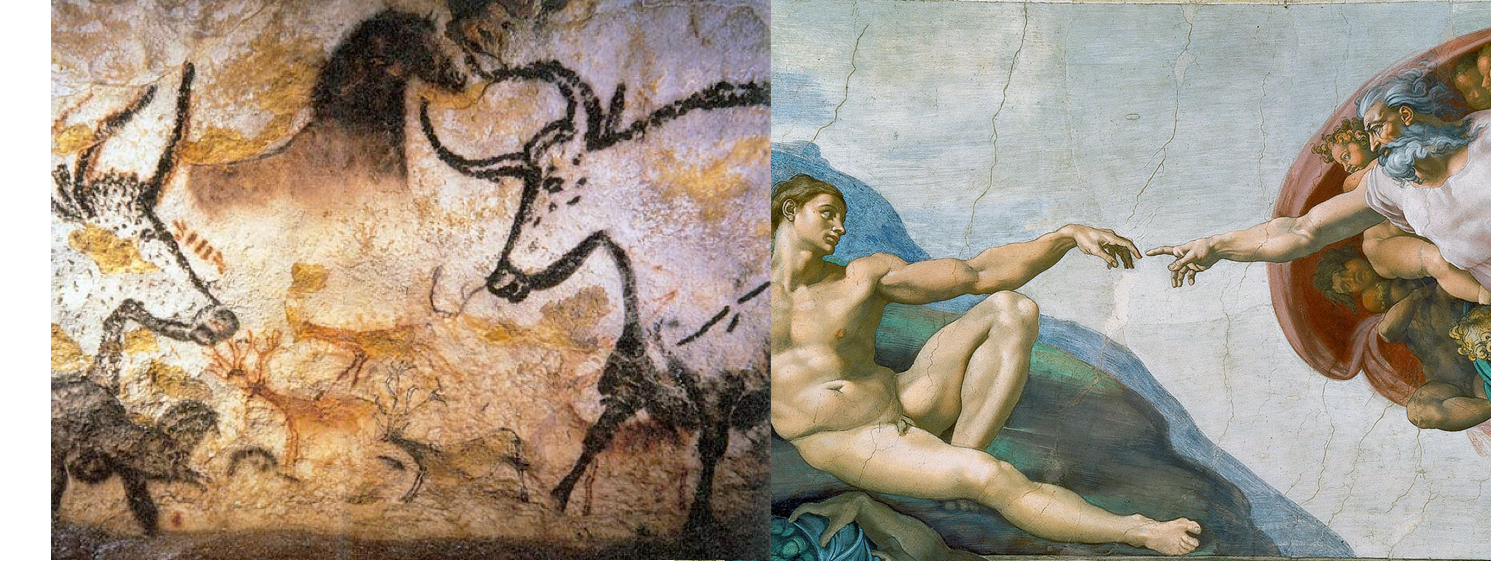
The Historic Value of Lime Mortar:
a Precious Gift from our Planet
Lime mortar is one of Civilization's most important discoveries and the foundation upon which it was built, both literally and symbolically. Coloured mortar is the single art medium connecting the entire history of art, from cave paintings to modern mural art to the entire history of architecture up to the present day. Its unique intrinsic luminosity also has a deep spiritual value and connection to the human story of expression and living.
The discovery of lime mortar was not the happy accident some think but rather a natural outcome in the evolution of human society. The ingredients required for lime, and lime mortar, have existed since the dawn of humanity - the earliest cave dwellers were already surrounded by the necessary materials to produce it.
When humans learned to harness the power of fire, they noticed that what was left in the hearth was lime mortar which had formed when the fire burned on a layer of calcium-based stone. It bears repeating that lime mortar has been with us as a product of human ingenuity from the beginning.
Over the course of human history, mortar has been a key building material. However, without the extraordinary attributes of lime mortar, both in terms of its aesthetic expression and chemical and mechanical properties, architecture and art would not have flourished throughout the ages. The succession of architectural styles depended on the evolution of understanding and skills in using lime mortar as a construction and finishing material. Few buildings of significance would have existed without it. Similarly, art history cannot be imagined without the major, mortar-based techniques (Fresco, Al Secco, Sgraffito). Art history started with cave paintings, continued with ancient Egyptian art and Roman frescoes and then with the Renaissance fresco masters: Fra Angelico, Masaccio, Giotto, Piero della Francesca, Paolo Uccello, and others. None of these works would have been possible without the use of lime mortar as a base.
Initially, lime mortar was used in wall construction to bind the building blocks (bricks, stone, etc.) and, later, as a wall finish. However, when people noticed its beautiful texture and expression, they started using it more for decorative purposes. They also found that applying water-based colours on a wet lime mortar surface “locked” the painting into the surface. As a result, frescoes quickly became the most used decoration technique for churches and related spaces. The frescoes of Pompeii and Michelangelo’s Sistine Chapel in the Vatican are among the best illustrations of this discovery.
During the Renaissance, it became evident that certain pigments added to the mortar does not damage its curing process. Therefore, they started making coloured mortar, first as wall finish and then in the mural art technique of Sgraffito (layers of coloured mortar, scraped through to reveal the design). Most Sgraffitos were created in Italy and later in Central Europe.
In Catalino’s technique, lime mortar becomes a complete art medium, possibly for the first time in art history. Catalino paints with coloured mortar, using its 3-dimensionality, and integrates in unique ways, Renaissance Sgraffito and genuine fresco in his work.